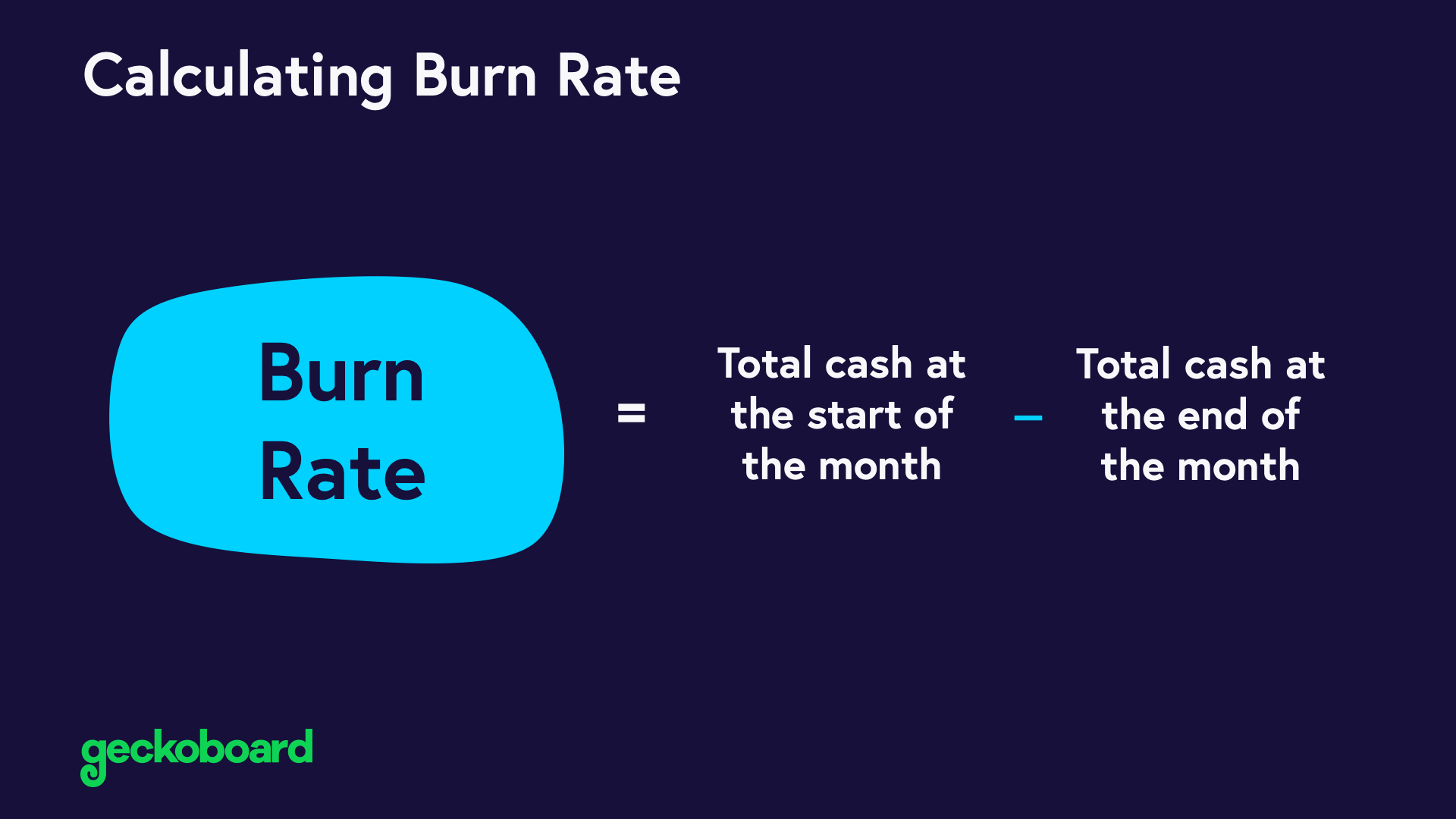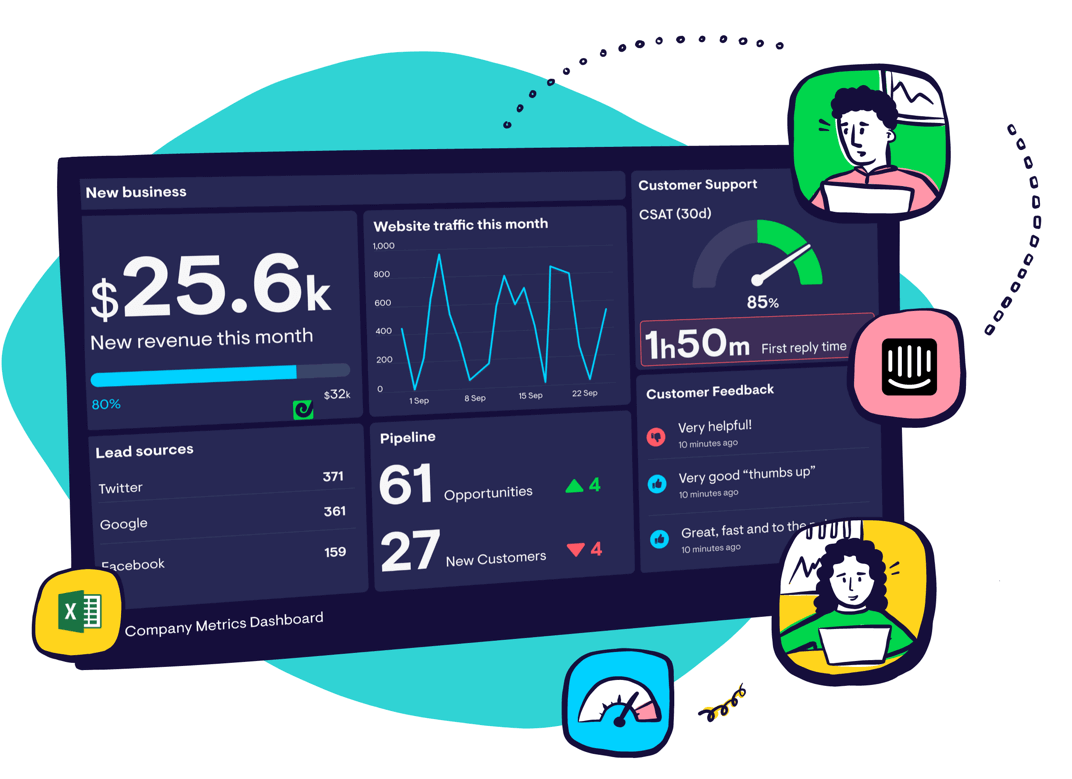Burn Rate
What is burn rate?
Burn rate refers to the amount of cash your business spends in a month. You can use this information to calculate cash runway and determine whether your costs to income ratio is too low or whether you can afford to invest more in growth efforts like marketing and advertising.
Burn rate will vary significantly depending on company stage, pricing model, and industry. Typically, burn rate is a more common metric for early-stage startups, especially before they become profitable.
A good benchmark is to always have enough savings to cover six months’ worth of expenses, based on your current burn rate.
How to calculate burn rate
Total cash at start of month - Total cash at end of month = Burn Rate
Include all money spent when determining burn rate. The metric will be misleading if seemingly “one-off” expenses, like furnishing a new office, are omitted. It’s best to compare your bank balance at the beginning of the month versus the end of the month to ensure all expenses are included.
If you see a sudden spike from one month to the next, dig deeper to see if it was caused by a one-time expense or an increase in a recurring cost, which could be more cause for concern.
Determine what percentage of your burn rate comes from fixed costs, like equipment and office overhead, versus variable costs that you can reduce quickly—like one-time marketing campaigns or contractor costs. If your burn rate is too high, you’ll know which expenses you need to cut.

Why tracking burn rate is critical
Calculating burn rate is essential for determining how much cash the company needs in order to keep operating and growing. It helps you see if you need to change your current cost-to-income ratio by pursuing new fundraising opportunities or cutting costs. Conversely, it lets you know if you have extra cash to reinvest in your company to increase marketing efforts or improve product development.
Calculate your expected costs and create a prediction for what you think your burn rate should be. Compare your projection with your actual burn rate to watch for fluctuations that might point to unexpected expenses. Assuming your burn rate will remain constant can cause you to miss sudden changes, which could lead you to overspend or budget incorrectly.
Tracking burn rate is especially vital for startups, which may not have a steady income flow yet.
3 metrics to track alongside burn rate
While it is critical to watch for unusually high spend each month, burn rate isn’t the sole indicator of your company’s financial health. Early-stage startups that recently secured VC funding are likely to have a negative burn rate while they fully develop their product and work through the initial stages of marketing and sales.
To get a broader picture of your company’s financial health, track these metrics alongside burn rate:
- Cash runway: Calculates how long until your company runs out of money, using burn rate and current cash balance.
- Gross MRR churn rate: Tells you the percentage of revenue lost each month due to downgrades or cancellations. A high MRR churn rate could indicate the reasons behind an unusually high burn rate.
- Revenue growth rate: Tracks the percentage increase or decrease of your revenue month over month to help you see how quickly your company is growing. As your revenue increases, your burn rate should improve.
Monitor burn rate in real time with a shared dashboard
Financial metrics like burn rate can change quickly. The faster you can detect significant adjustments in your data, the better prepared you will be to respond before the problem gets out-of-hand. A data dashboard enables you to keep your most important metrics visible, so you can easily track them without digging through multiple data sources.
Include burn rate on your startup CEO dashboard, and display it on a computer monitor or office TV so you can see it every day and immediately detect any significant change. You can also share the dashboard with your executive or financial team via Slack or with sharing links and easily keep your whole team up to date.
